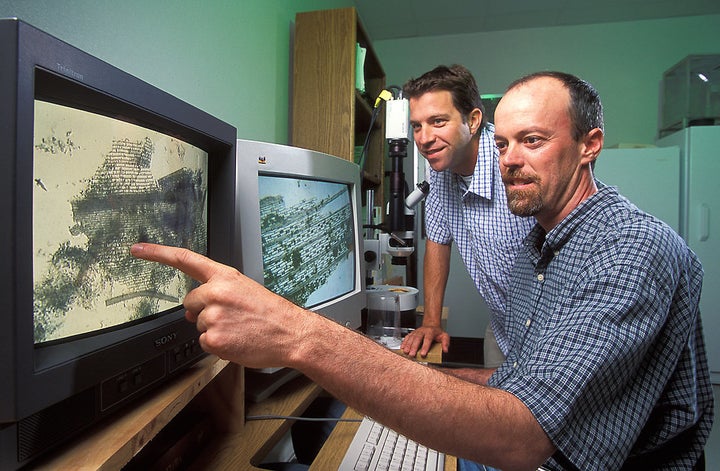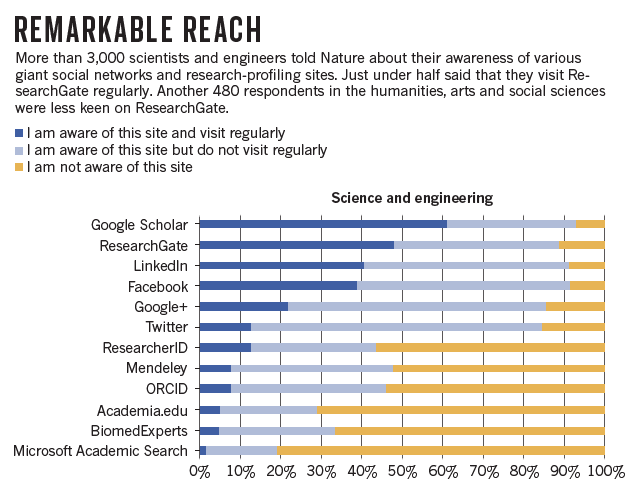
The rapid expansion of Internet and social media has influenced almost all spheres of modern life. Social media, in particular, has merged information with public opinion, and brought closer to reality, the concept of global unity. While there is much discussion on the application and influence of social media tools in primary and high school education, there is relatively less known about the use of social media in higher scientific research domains. It is obvious that social media tools offer potential to serve as a powerful public voice for science, but is this potential being harnessed fully yet?
There is a general perception of stigma attached to online activities involving science and engineering (grouped henceforth into “science” for convenience) among both general public and scientists themselves. Many perceive online profile and social media discussions as a “waste of time” and a distraction from research and teaching duties. While this perception was strong enough a few years back to cause failure of science-focused social networking sites such as Scientist Solutions, SciLinks, Epernicus, 2collab and Nature Network, the situation seems to have turned around considerably. The past years have seen an increasing number of scientists step down from the ivory tower of traditional scientific communication to engage in both focused and nonfocused social media sites to both obtain and share information and knowledge in their fields. This has been driven by changes in the ways in which scientists interact with one another and in the methods of scientific outreach/education. The scientific population still remains divided in this aspect, but the trend is shifting towards increasing use of social media platforms for science. In a 2014 survey by the University of Michigan, approximately 60% of researchers polled engaged the media, public, and government agencies through social networking channels. The rest of respondents stated they would never use social media for academic or professional work. It is reasonable to expect that the numbers have shifted towards greater use of social media in science since then.
Focused sites such as Wikipedia and ResearchGate are now an integral part of a researcher’s work life and long-distance collaborative research initiated and fueled by such sites are not uncommon. Little wonder then that ResearchGate already has more than 4.5 million users, with the number steadily increasing every day, and investments from all areas to the tune of 35 million dollars. Nature’s survey of 3000 scientists and engineers in America in 2014 showed the following trend of social media use by scientists and engineers for their work.

Focused social media sites such as google scholar, ResearchGate and LinkedIn are largely used by scientists and engineers to connect with their peers for discussions, validation and communication. The type of online conversations and shared content among scientists in social media vary widely between sharing journal articles to circulating information about professional opportunities and upcoming events and posting references. With more and more digital natives slowly nearing the age of involvement in research, social media is set to transform and expand the culture of science as a whole. Blogs are becoming ideal media for extended scientific conversations and fast-paced discussions of cutting edge topics. Blog entries are now slowly being considered for pre-print and post-print discussions of peer-reviewed manuscripts and additional information thereof.
Although some scientists perceive traditional social networking sites such as Facebook and Twitter as unprofessional platforms that could “compromise or threaten years of life-changing research”, there are others who are avid supporters of mainstream social media. Stephen Hawking, for example, has a Twitter presence, and interacts with a large worldwide community to discuss both science and otherwise. Richard Dawkins’ Facebook pages (both personal and professional) are fertile grounds for scientific discussion.
There has been, in recent years, a need for the scientific community to engage in science outreach via social media (SOSM) as part of a broader agenda for researchers to engage the public. Beyond forging links among scientists, social media sites, especially the traditional SN sites such as FB and twitter, can take science to the public as well, an activity that is being considered important by many funding agencies; the Broader Impacts Criterion of National Science Foundation mandates outreach as part of the granting process for the nation’s researchers. In the realm of public broadcasts of scientific information, social media can be a very powerful force, especially when content goes “viral”, an interesting example being #iamscience, which serves to dispel ubiquitous stereotypes associated with science and scientists among the public.
It must also be mentioned that the very same propensity of social networking posts to become viral can also cause much harm to science and scientists, often leading to a “public relations nightmare” narrative. “Scienceploitation”, a term coined by Tim Caulfield to describe the misreporting and inaccurate or even dangerous simplification of scientific information for the sake of readership, is a serious concern in social media communications involving science. A recent article titled “How social media can distort and misinform when communicating science”, which discussed the relationship between public perception of scientific topics (case studied: “antimicrobial resistance”) and how much related information they read and shared on social media, found that high levels of traditional social media consumption resulted in greater misinformation. The viral spread of the “discovery” of arsenic-utilizing bacteria that reportedly incorporated arsenic in its DNA instead of phosphorous, through social media in the 2010s was a classic example of the misuse of social media to induce mass hysteria even among the otherwise rational scientific community. Thus, social media can be a virile vehicle of hype. Interestingly, in the case of the arsenic debacle, the refutation of the hype was also broadcast live on social media; microbiologist Rosie Redfield live-blogged her attempts to replicate the original study, thus disproving it long before formal peer reviewed communication.
Another serious barrier to adoption of social media tools in scientific communication is the absence of quantitative metrics to measure accuracy, impact and long term utility of the science being communicated. There are a few attempts at such developments; the altmetrics movement for example, has been developed to provide a means to measure the real-world impact of scientific research as opposed to the traditional metric of journal value. Google scholar, ImpactStory and Open Researcher Contributer ID initiatives are other attempts in the area.
Social media can, undoubtedly, be nucleating spots of misinformation and pseudoscience with potential to distort public understanding of scientific ideas. However, its ease of communication to both peers and public is critical to the distribution of scientific information and spread of scientific temper among people. It may not be long before social media becomes the only powerful means of communication, and a scientist may not be doing science much of a favor by not being in it. Such a movement requires greater insurgence by the scientific community into social media today, and more importantly, the development of reliable metrics that can separate the chaff from grain in social media science.
Writing credit: Co-authored by Lakshmi, a Mobicip blogger and researcher who dwells on the role and extent of social media interactions in life.
Mobicip is the creator of the most powerful and extensive internet safety software for tablets, smartphones and computers in households today. Learn more at www.mobicip.com.
